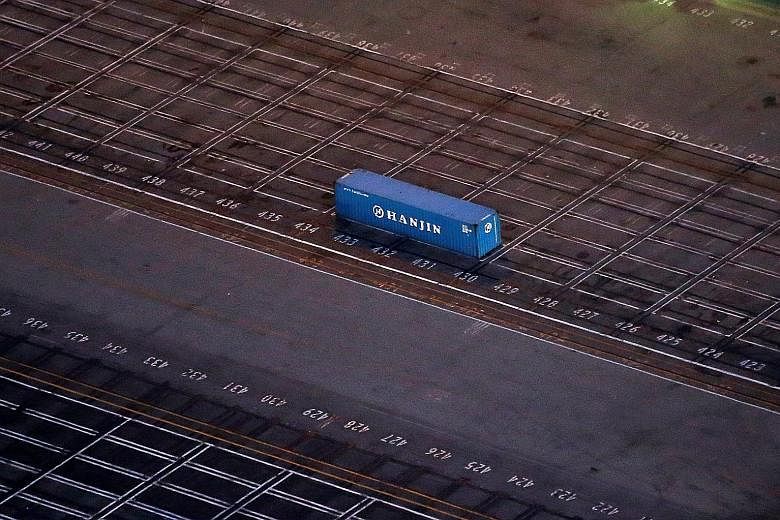NEW YORK • The constant flow of goods from Asia to the United States was briefly interrupted last month after Hanjin, the South Korean shipping line, filed for bankruptcy, leaving several dozen of its cargo ships stranded on the high seas.
It was a moment that made literal the stagnation of globalisation.
The growth of trade among nations is among the most consequential and controversial economic developments of recent decades. Yet despite the noisy debates, which have reached new heights during the current US presidential campaign, it is a little-noticed fact that trade is no longer rising.
Hanjin, like other big shipping companies, bet that global trade would continue to expand rapidly. In 2009, the world's cargo lines had enough room to carry 12.1 million of the standardised shipping containers that have played a crucial, if quiet, role in the rise of global trade. By last year, they had room for 19.9 million - much of it unneeded.
The volume of global trade was flat in the first quarter of the year, then fell 0.8 per cent in the second quarter, according to statisticians in the Netherlands, which happens to keep the best data.
The United States is no exception to the broader trend. The total value of US imports and exports fell more than US$200 billion (S$278 billion) last year. Through the first nine months of the year, trade fell an additional US$470 billion.
It is the first time since World War II that trade with other nations has declined during a period of economic growth.
Sluggish global economic growth is both a cause and a result of the slowdown. In better times, prosperity increased trade and trade increased prosperity. Now the wheel is turning in the opposite direction. Reduced consumption and investment are dragging on trade, which is slowing growth.
But there are also signs that the slowdown is becoming structural. Developed nations appear to be backing away from globalisation.
The World Trade Organisation's (WTO) most recent round of global trade talks ended in failure last year. The Trans-Pacific Partnership, an attempt to forge a regional trade agreement among Pacific Rim nations, also is foundering. It is opposed by both major-party US presidential candidates. Meanwhile, new barriers are rising. Britain is leaving the European Union. The WTO said in July that its members had put in place more than 2,100 new restrictions on trade since 2008.
"Curbing free trade would be stalling an engine that has brought unprecedented welfare gains around the world over many decades," Ms Christine Lagarde, managing director of the International Monetary Fund, wrote in a recent call for nations to renew their commitment to trade.
Against the tide, the EU and Canada signed a new trade deal on Sunday.
It may be hard, however, to muster public enthusiasm in the US and other developed nations.
The benefits of globalisation have accrued disproportionately to the wealthy, while the costs have fallen on displaced workers, and governments have failed to ease their pain.
NYTIMES

